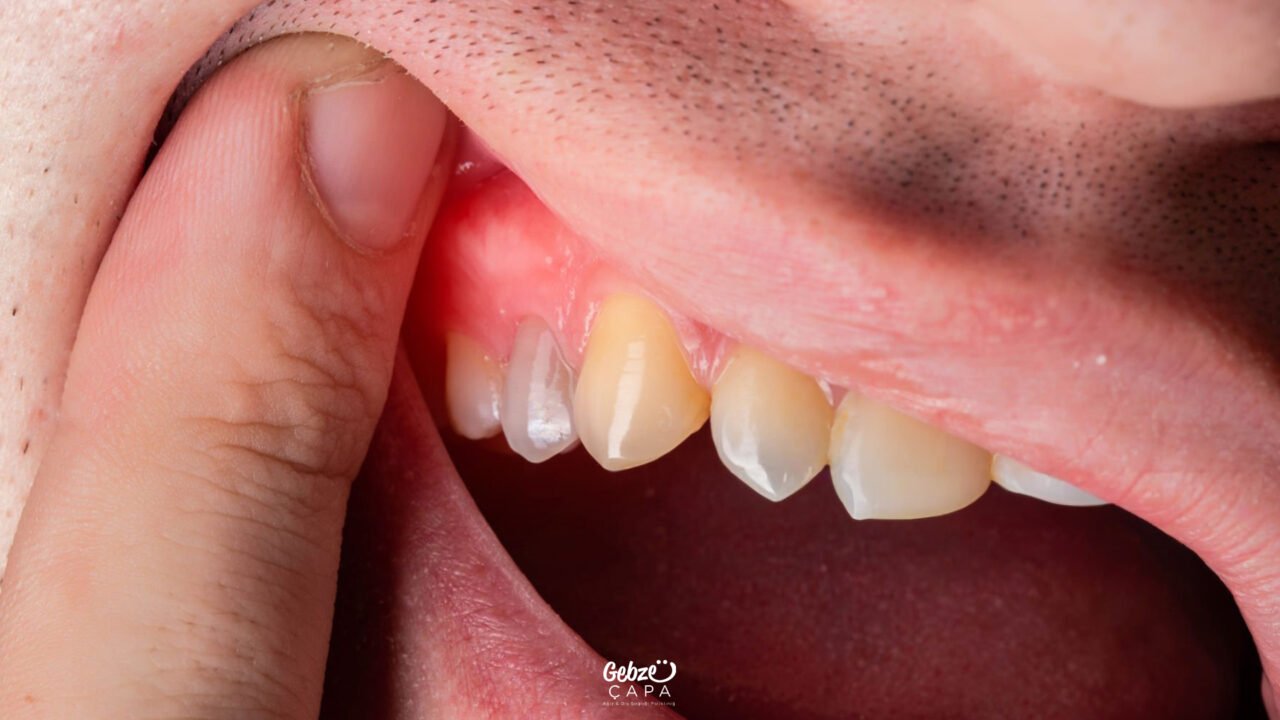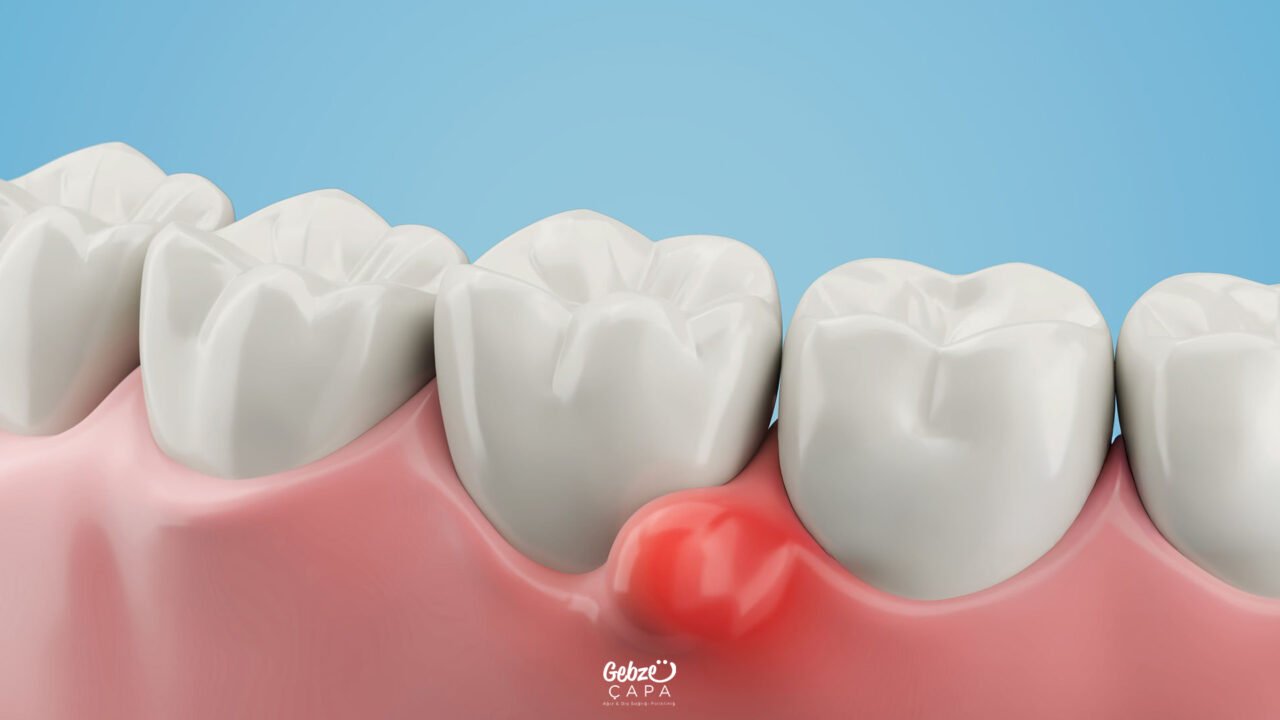Inflamed Toothache
A toothache is a guest most people experience at least once in their lives, but its effects are hard to forget. Especially when it’s an infected toothache, the pain practically takes over the entire body. A mild ache that begins while you’re sipping your coffee during the day can turn into an unbearable throbbing in the middle of the night. You wake up, and a part of you feels like a fire burning; you don’t want to talk, or eat… Because that little inflammation in your mouth has now become a affliction throughout your body.
Sometimes this pain starts insidiously, you feel a tiny bit of tenderness in your gums, and you dismiss it thinking it’ll “pass.” But the next morning, when you look in the mirror, you’re greedy to find a swollen cheek and a tooth you can’t even touch. That’s when you realize this isn’t going to go away on its own. That’s what an infected toothache is like: a minor oversight turned into a major pain.
No matter how strong we are, we all experience the same despair when a toothache strikes. This pain isn’t just physical; when combined with sleep deprivation, fatigue, and even anger, it saps all our energy. Therefore, an inflammatory toothache isn’t just a health problem; it’s a test of our patience.
What is Infectious Toothache?
Simply put, an inflammatory toothache is a severe pain that occurs when an infection develops deep inside the tooth, particularly in the pulp, where nerves and blood vessels reside, or in the tissues surrounding the tooth. In essence, this pain is a warning signal from the body: “There’s a problem here; it’s time to take care of it.”
This condition often develops as a result of unnoticed tooth decay, neglected gingivitis, or abandoned root canal treatment. Initially, what may seem like minor sensitivity can develop over time as bacteria reach the inner layer of the tooth, turning into a serious infection. At that point, the pain intensifies, sometimes becoming throbbing and sometimes pulsating.

Tooth infection doesn’t just stay in the mouth; it can sometimes turn into pain that radiates to the jaw, ear, and even head. Therefore, waiting, thinking “it’ll go away,” can only exacerbate the problem. As the infection spreads, it can affect not only the tooth but even the surrounding bone tissue.
Why an Inflamed Tooth Hurts
There’s no single cause for an inflamed toothache. The mouth, teeth, and gums are like an ecosystem; everything is interconnected. When this balance is disrupted, even a small oversight can turn into a major problem. Sometimes skipping brushing for a few days, or sometimes delaying a cavity by saying, “It doesn’t hurt yet,” can unknowingly open the door to infection.
Deep Tooth Decay
This is one of the most common causes. Initially, you might only feel a slight tingle when you drink cold water or eat sweets. We usually ignore this signal and say, “It’s okay.” However, by then, the decay has slowly progressed through the tiny holes in the tooth toward the nerve fibers. At some point, bacteria reach the pulp tissue, where inflammation begins. This is when the pain becomes unbearable; throbbing, sleepless nights, and the need to reach for painkillers begin.
Gum Disease
Many people think that only tooth decay causes inflammation, but gum disease is just as dangerous as cavities. A simple redness or bleeding that begins in the gums can spread to the roots of the teeth over time. If you notice swelling, tenderness, or a foul odor in your gums, this is a sign of an infection. If this condition is left untreated for a long time, even the bone surrounding the tooth can be affected, and the tooth may begin to loosen.
Unsuccessful or Incomplete Root Canal Treatments
A root canal is often the last step to save a tooth. However, sometimes not all bacteria are removed during treatment or the root canals are not completely filled. While everything may seem fine initially, the infection can resurface after a while. In such cases, the pain is usually sudden and severe; sometimes a small abscess can form at the root apex of the tooth. Such cases require further intervention by a dentist.
Trauma or Impacts
Sometimes, there’s no decay, but the tooth still hurts. This can be caused by a sharp blow to the tooth. A fall, hitting it with a hard object, or unintentionally clenching the tooth (bruxism) can damage the nerve tissue. When nerve tissue dies, bacteria can easily multiply, causing inflammation. While the tooth may appear healthy from the outside, the inside may already be infected.
Symptoms of an Infected Tooth
An infected tooth usually doesn’t begin quietly; on the contrary, your body sends you many signals, but we often ignore them. A slight tingling, a sudden chill after drinking cold water, or a slight tenderness in the gums—all of these are early warning signs of impending tooth infection. However, recognizing these signs early can both save the tooth and prevent excruciating pain later on.
The most obvious symptom of an infected tooth is a throbbing, gradually increasing pain. This pain is sometimes felt while eating, and sometimes it begins spontaneously, without any apparent cause. It’s especially intense at night, the moment your head hits the pillow; you might feel a pulse inside your tooth. This is a clear indication that the infection has spread to the nerves of the tooth.

However, extreme sensitivity to hot or cold foods is also a sign of inflammation. If a sip of tea or a spoonful of ice cream causes a sudden pain inside the tooth, this usually indicates that the nerve tissue is affected by the infection. Over time, this sensitivity becomes felt not only with food but even with air.
As the inflammation progresses, swelling occurs in the gums or face. When you look in the mirror in the morning, you may notice a swelling on one side of your cheek. This swelling can sometimes be mild, but it can also be so large that it significantly deforms one side of your face. It can also cause a painful, warm area to the touch.
How to Relieve an Inflamed Toothache?
First of all, it’s important to understand that no home remedy can completely eliminate an infected toothache. Inflammation occurs in the deep tissues or at the root of the tooth, and this area can only be reached with professional dental treatment. However, sometimes the pain is so severe that it’s not possible to see a dentist immediately. In such cases, there are some temporary remedies that can be used to alleviate the pain and make the night more comfortable.
First, gargling with warm salt water is both practical and effective. Salt water acts as a natural antiseptic, helping to reduce bacteria in the infected area. It can also alleviate some of the swelling and irritation in the gums. It’s important to make sure the water isn’t too hot; hot water can exacerbate the pain.
Another soothing method is applying a cold compress. Briefly applying an ice pack wrapped in a clean cloth to the outer side of the cheek where the aching tooth is located can reduce both swelling and pain. The cold constricts blood vessels, temporarily relieving pressure on the inflamed area. However, care should be taken to avoid direct contact of the ice with the skin.
Sleeping with your head elevated can also reduce the severity of nighttime pain. A low head position increases blood flow to the inflamed area, creating pressure and intensifying the pain. Therefore, slightly elevating your head with a few pillows can help control the pain.
Painkillers can also provide short-term relief; however, this should be done only after consulting a doctor. The same medication may not be effective in every case of inflammation, and some painkillers can have adverse effects on the stomach or liver.

What is the Treatment Process?
The treatment of an infected tooth varies depending on the stage of the infection. The method used is not the same in every case; sometimes the infection has reached the root of the tooth, while other times the infection is closer to the surface. Therefore, the dentist first performs a detailed examination, usually by taking X-rays, to determine the location and extent of the infection. The most appropriate treatment plan is then determined to save the tooth and control the infection.
If the infection has reached the nerve tissue inside the tooth, a root canal is usually performed. During this procedure, the inflamed nerve and vascular tissue inside the tooth are carefully cleaned, the root canals are disinfected, and the tooth is resealed with a special filling material. This prevents the infection from recurring and allows the tooth to remain in its natural state. Root canal treatment is one of the most effective solutions for inflamed but salvageable teeth.
In some cases, an abscess may form at the root of the tooth or in the surrounding tissue. In this case, the dentist will drain the inflammatory fluid from the abscess and relieve the area. This procedure is called “abscess drainage.” This procedure usually significantly reduces pain because the pressure in the area is relieved. This also prevents the risk of the infection spreading to surrounding tissues.


